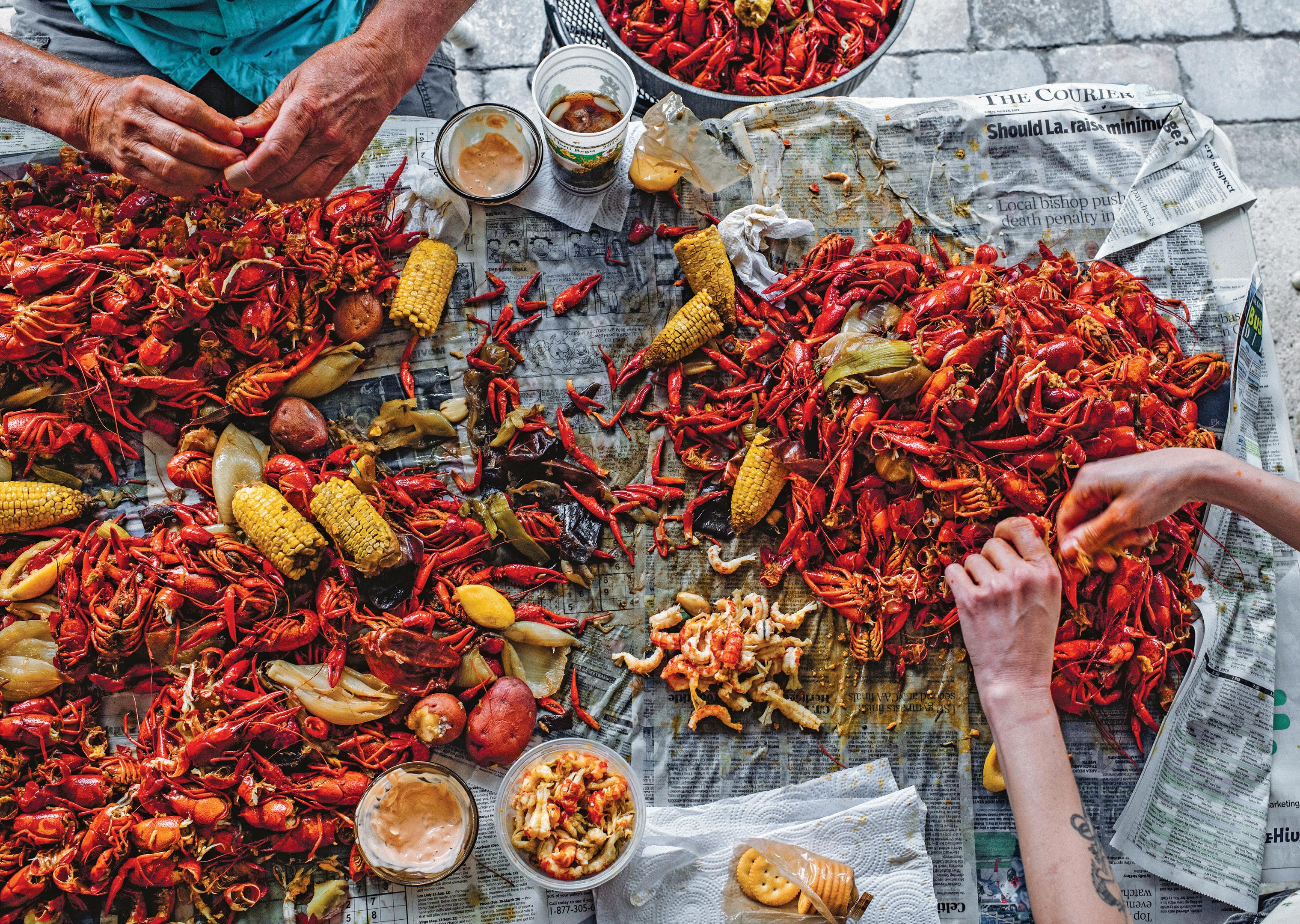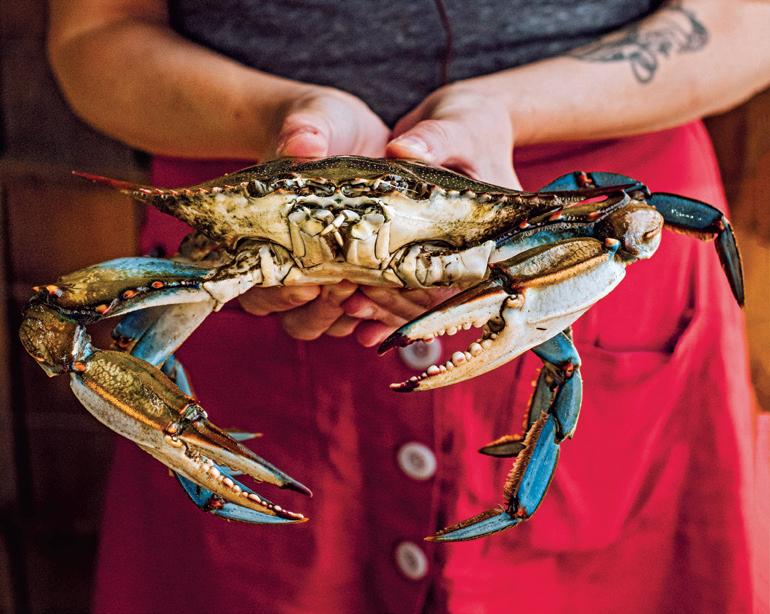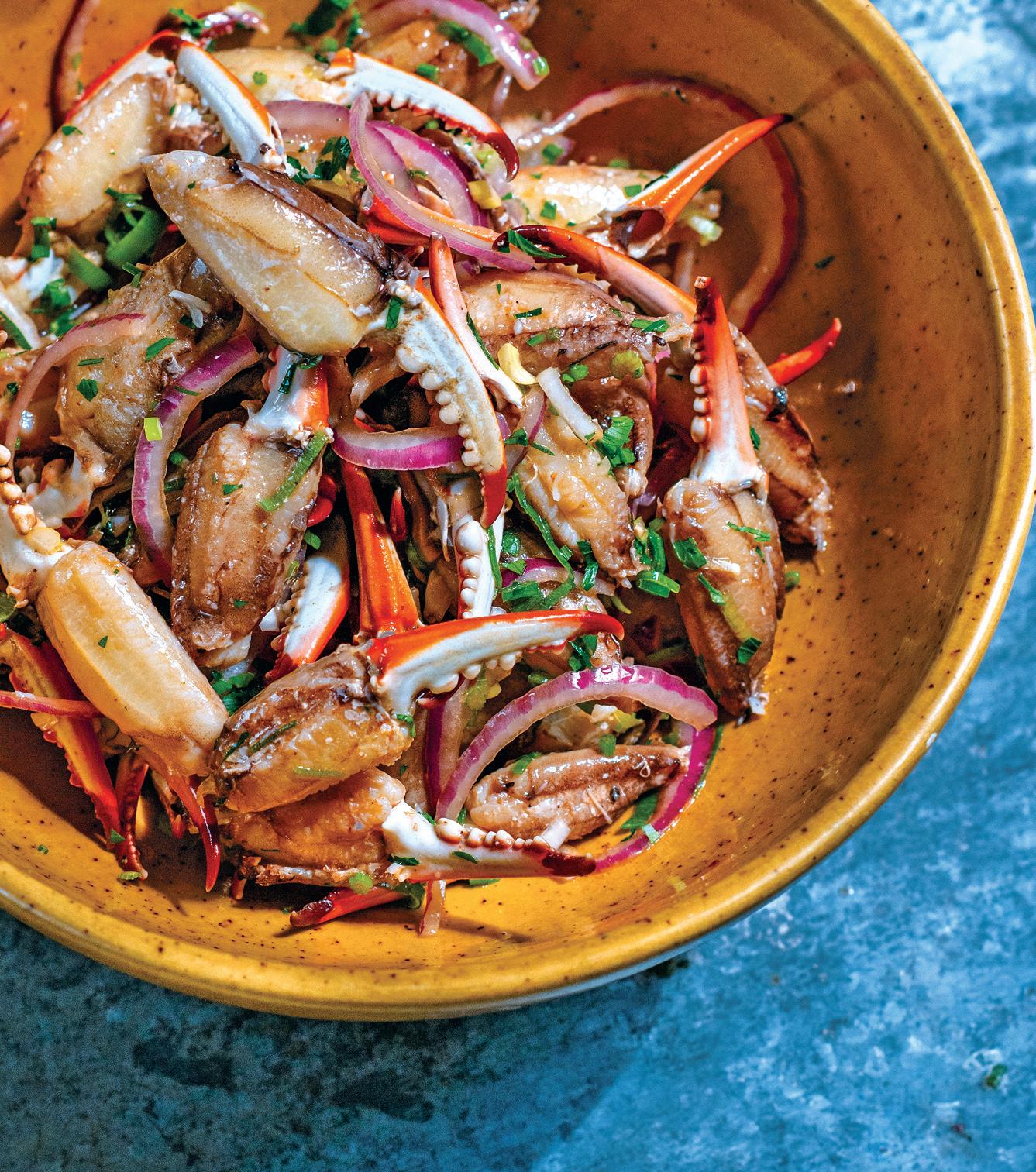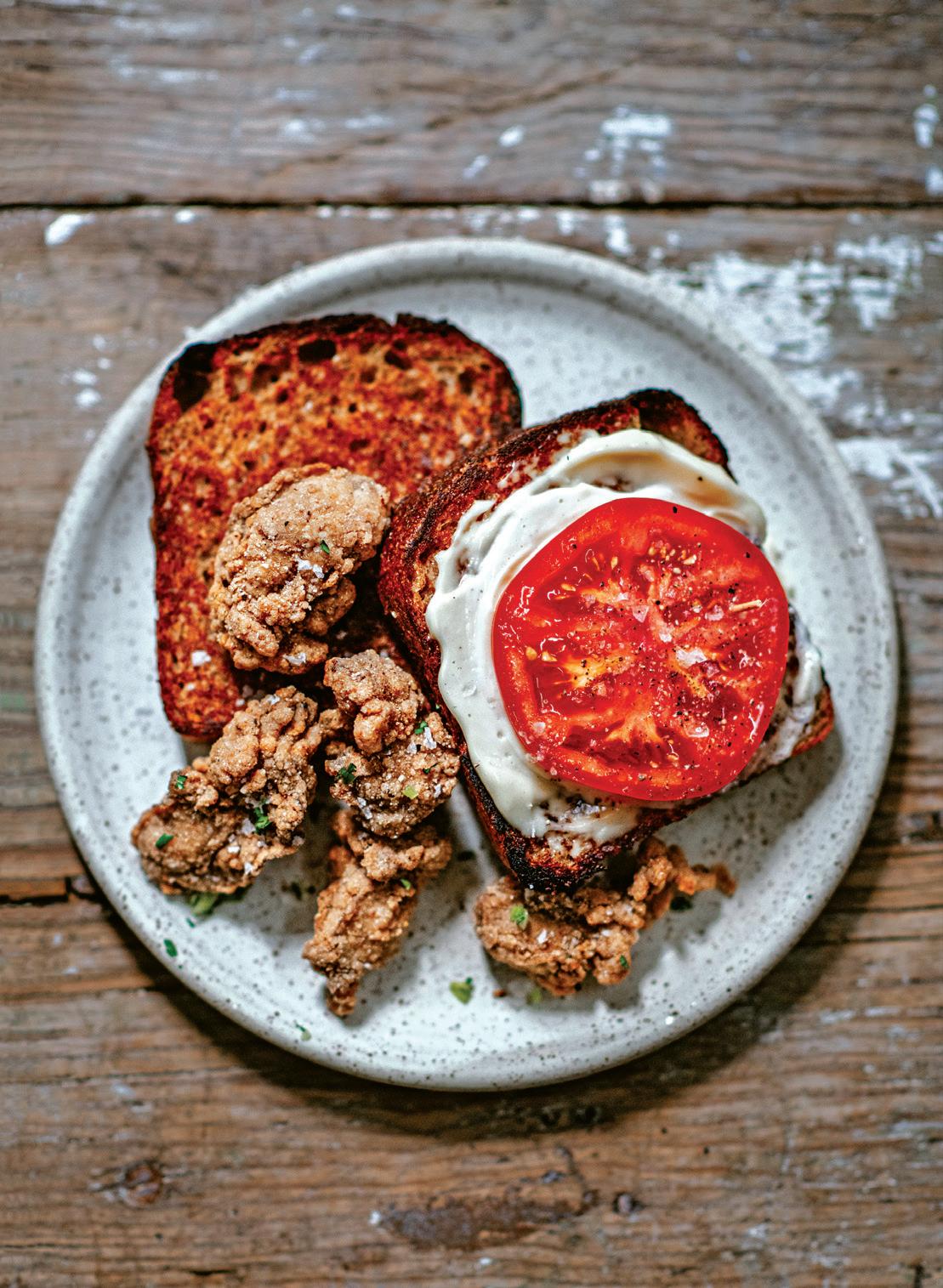
4 minute read
GOOD EARTH, GOOD EATIN’
Savoring—and saving—Cajun Country cuisine
TEXT BY MELISSA M. MARTIN | PHOTOGRAPHY BY DENNY CULBERT



The first thing I think when someone refers to the states below the Mason-Dixon Line is “that’s north.” As a child in one of the southernmost parts of Louisiana, I didn’t understand the concept of the American South. To me, everything above Baton Rouge was the north. I grew up with leftover gumbo in the fridge and an oil rig drilling just outside my window. I didn’t know it was special to eat cold crabs for breakfast and be surrounded by water and bayous, ibis and pelicans, receding land and dying cypress trees. I also didn’t know I was Cajun.
I was born and raised in South Louisiana in Terrebonne Parish. Terrebonne means “good earth” in French, and situated as it is on delta soil, the parish is aptly named. The Terrebonne my dad remembers growing up in sounds like a fairy-tale land: cypress- and oak-lined waterways; squirrels jumping from tree to tree overhead; egrets, cranes and herons hiding in hues of green, blue and emerald. Now the 100 million migratory birds that use South Louisiana as a wintering habitat lack landing pads in Terrebonne Parish. Most of the cypress and oak trees that are still standing are stripped to bare branches, and the majority of the islands and bayous that encompassed the barrier waters have become lakes. Terrebonne Parish is hanging on to the coastline for dear life.
Louisiana is losing more good earth than any other place on the planet. Louisiana’s coast, a thick, ever-changing blanket of marsh, is disappearing, and our wetlands and bayous are disappearing along with it. A whole list of places in South Louisiana that once held history are now covered in water. Before Cocodrie and Chauvin—the lands on which my grandparents, parents, siblings and I were born and raised— join that list, I want to make sure we put the Cajun food I grew up with and the people responsible for it on record. It’s imperative that the small fishing villages that push out so much seafood, tradition and culture be recognized and remembered before time and tides take their toll.
Louisiana has already lost a landmass the size of Delaware. Unless the Mississippi River is diverted and allowed to flow into areas dependent on sediment, the delta lands, swamps, marshes and bays on which our ancestors settled will disappear, submerged in the Gulf of Mexico. In


the next 25 years, if the water continues to rise at the current rate, a majority of Terrebonne Parish could be gone, and New Orleans could become a seaside town.
A question New Orleanians are asked often is “Where can I get good Cajun food?” My answer would be “Do you know someone from down the bayou? Someone whose house you can go to?” That’s where you find real Cajun food. You can eat incredible Cajun food throughout South Louisiana on any given day—but it’s being prepared by busy, industrious women tucked away in home kitchens.
Every recipe I know, I learned from a woman. Those of us who grew up on the bayou know that women run the kitchens. I am at the mercy of their knowledge, wisdom and strength, and I’ve been fortunate enough to be on the receiving side of their kitchen mastery. Women are the backbone of the tiny village in which I was raised, and they are the masters of sustaining and ensuring the survival of bayou communities.
The Cajun food I ate growing up wasn’t loud or flashy—no bam!—and it was not consumed with copious amounts of beer or alcohol. We ate simple, whole foods, and we ate with the seasons. We ate a cuisine rooted in the hard work of fishermen and the palates and grace of mothers and wives commanding their stoves.
I opened Mosquito Supper Club because I wanted people to learn about the real Cajun food I grew up with. And I wanted to present that food in the context in which we eat it on the bayou—with a woman in charge of the menu and the stories. I wanted to bring this simple Cajun food out of home kitchens and onto a restaurant table for folks from around the world to enjoy. I wanted to cook with Louisiana seafood and local produce; I wanted to forage for blackberries when they were in season and process okra when it was abundant and serve them both in ways that feel familiar to me. I wanted to bring the best of the bayou to the table and shine a light on what was happening to the place I grew up and the people who live there.
Excerpted from Mosquito Supper Club by Melissa M. Martin (Artisan Books). Copyright © 2020. Photos by Denny Culbert.





